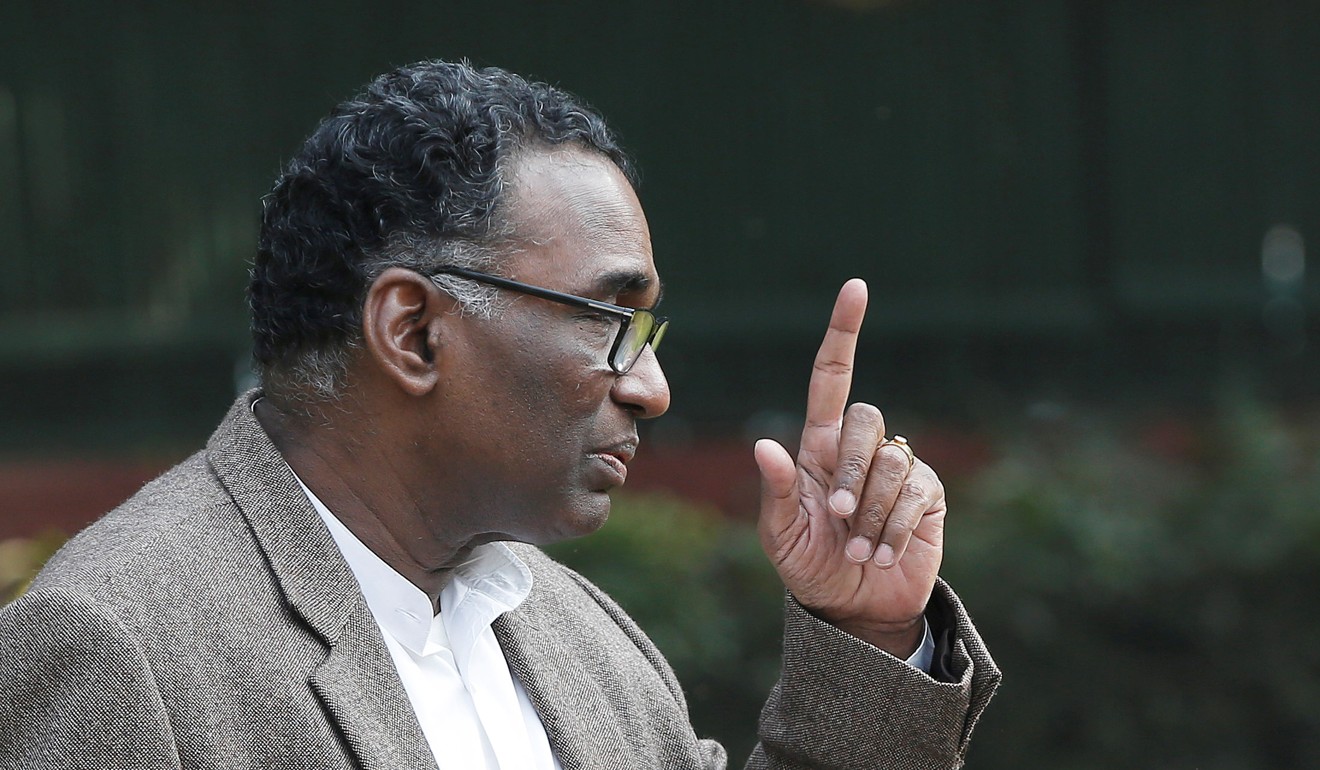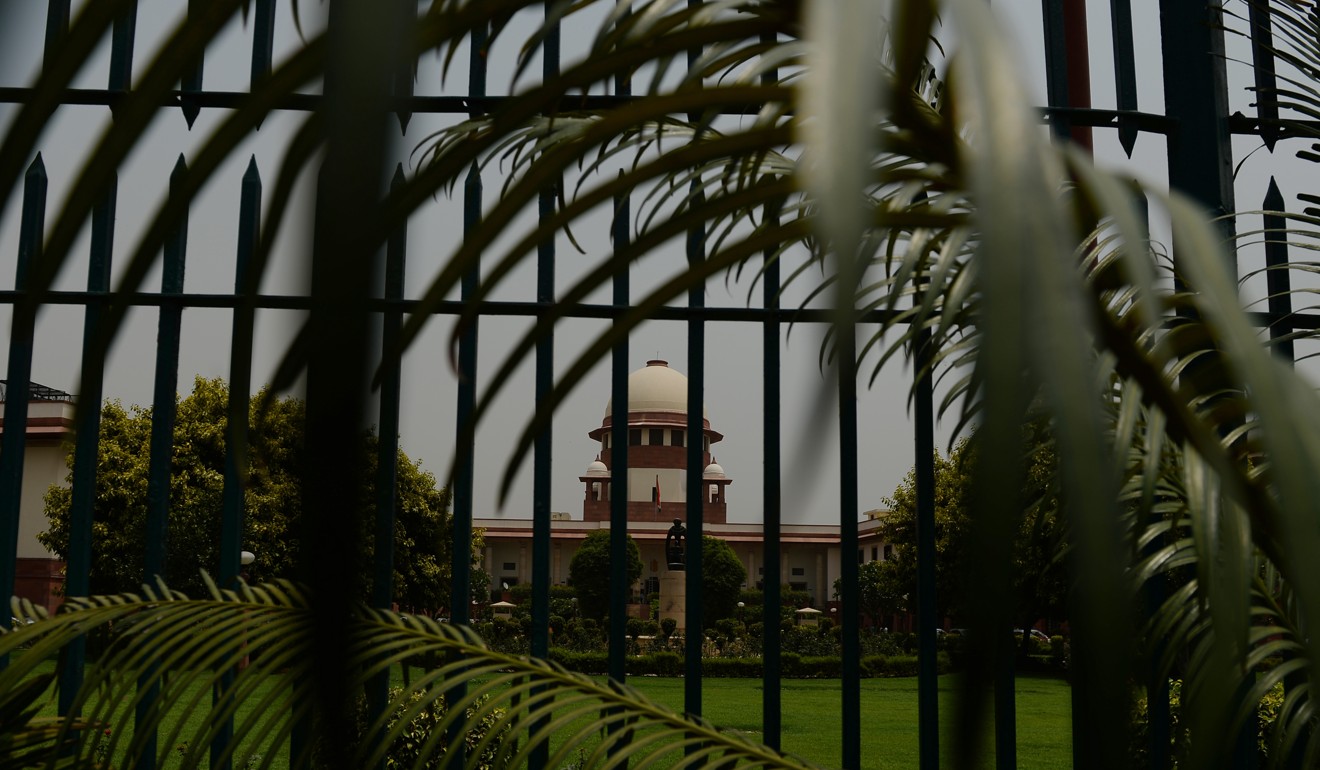
Modi, a dead judge, and ghosts from the past
A revolt in India’s Supreme Court can be traced to a case linked to one of the most difficult phases of the Indian leader’s career
The Supreme Court found itself in uncharted territory last week when four of its senior-most judges called a press conference and alleged misconduct by Chief Justice Dipak Misra for arbitrarily assigning politically significant cases to junior judges.
“The four of us are convinced that unless this institution is preserved and it maintains its equanimity, democracy will not survive in this country,” Justice Jasti Chelameswar, the second-most senior judge after the chief justice, told reporters.

The chief justice along with these four senior judges comprise the all-powerful collegium that takes the most important decisions related to India’s higher courts, such as promotion, appointment and transfer of judges. The government acts on the collegium’s recommendations.
In a letter to Misra, the senior judges urged him to assign important cases according to seniority. The judges, one of them in line to be the next chief justice, also raised concerns about judicial appointments, a bone of contention between the government and the judiciary.
Modi is facing a perfect storm in Gujarat. Can he weather it?
Soon after the rare show of defiance, another four retired judges waded into the controversy with an open letter to the chief justice, supporting the issues raised by the current judges. This week, senior advocate and activist Prashant Bhushan, who heads the Campaign for Judicial Accountability and Judicial Reforms, added fuel to the fire by filing a sensational complaint against the chief justice, alleging “serious misconduct”, including possible forgery.
According to Bhushan, the government is forcing the chief justice to assign certain judges to important cases to swing the verdict in its favour.

“The government is blackmailing Misra by delaying judges’ appointments, and this way, it is also trying to get in its own people,” Bhushan told This Week in Asia.
Ram redux: will India return to the days of temple strife?
Tensions between the chief justice and the senior judges have been brewing for some time over the allocation of high-profile cases. But this spate of very public allegations of undemocratic practices in an institution considered the final custodian of India’s democracy is widely believed to have erupted over a case related to Modi, or, more specifically, Amit Shah, his chief lieutenant and president of Modi’s ruling Bharatiya Janata Party (BJP).
Death or murder?
Though the senior judges refused to identify specific cases troubling them, they answered in the affirmative when asked by reporters if the showdown was related to the case urging a probe into the death of a lower court judge, B.H. Loya, in December 2014. According to The Times of India, “the final trigger” for the judges’ revolt was the chief justice’s refusal to their last-minute request to shift the case from his chosen bench.

The four judges, ranked No 2 to No 5 in seniority, felt the case should be assigned to a bench headed by a judge who was more senior than the one chosen – No 10 in the pecking order – by the chief justice. The unprecedented press conference of the justices took place within hours of Misra’s refusal to accede.
Modi stays afloat in Gujarat, but the tide may be turning
At the time of his death in 2014, Loya was presiding over a Central Bureau of Investigation (CBI) court hearing a case accusing Shah of involvement in extrajudicial killings in 2005 as a minister in the Gujarat cabinet when Modi was the chief minister of the western Indian state. The CBI had alleged that Shah ordered Gujarat police to kill Sohrabuddin Sheikh, a petty criminal, his wife, and their friend who was a witness to Sohrabuddin’s killing.
Loya, then 48, was the second judge assigned to the case. The first judge sought a transfer a day before Shah was to appear before him. Loya died suddenly on a tour in the middle of the trial. The third judge cleared Shah of any wrongdoing within weeks of taking over the case.

Hospital records show Loya died of a heart attack. Coming just months after Modi’s dramatic victory in national elections, the death went largely unnoticed. It shot to prominence last November, when The Caravan magazine ran a detailed story quoting Loya’s father and sisters on the circumstances around the death, suggesting he could have been murdered. But Loya’s son, who had asked for an inquiry in 2015, held a press conference this week to plead journalists to leave the family alone. The 21-year-old law student blamed “emotional turmoil” for earlier suspicions and said the family now had no doubts over the death.
Withdrawal symptoms: cash is still king in India, Modi not so much
But the debate over what happened to the judge is unlikely to go away anytime soon as those petitioning the Supreme Court for an independent probe staunchly believe the family is under enormous pressure not to pursue the case, as part of an elaborate cover-up to protect the most powerful Indian politician after Modi.
A Karl Rove-like figure, Shah is considered the brain to Modi’s face, the formidable organisation man who translates Modi’s charisma into votes with his strategic acumen. Modi’s closest ally and fellow Gujarati, he enjoys his leaders’ unconditional trust, which he has reciprocated by delivering state after state to the party since taking the helm. The BJP today controls 19 of the 29 states, the first party to do so.
Note ban: will it make India, or break Modi?
Shah’s centrality in the current dispensation also makes him a prime target of those opposed to Modi, for whom a revisiting of the Sohrabuddin case would be a political disaster, especially at a time when his halo appears to be fading as the economy continues to struggle.
The Sohrabuddin episode would have been largely forgotten had it not been for a local journalist who chased the clues obtained from drunken policemen and broke the story a year later. In 2010, the CBI arrested Shah in the case and kept him in detention for several months. There had also been reports at the time linking the Sohrabuddin case to the 2003 murder of Haren Pandya, a rising star in the party and Modi’s arch-rival.
Inconvenient truths: the murder of journalism in India
If The Caravan story similarly blows up and leads to the reopening of the Loya case, it will refocus public attention on the gory details of what was easily the toughest phase of Modi and Shah’s political career, and one that both have tried hard to leave behind. But as Modi is finding out, burying the past can be a lot more difficult in Delhi as head of a complex federal architecture, than Gujarat, where he ruled as a regional chieftain with an iron hand for 12½ years. The judges’ revolt is a sign just how difficult. ■

